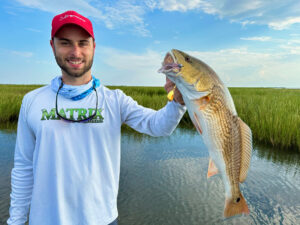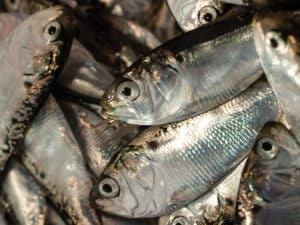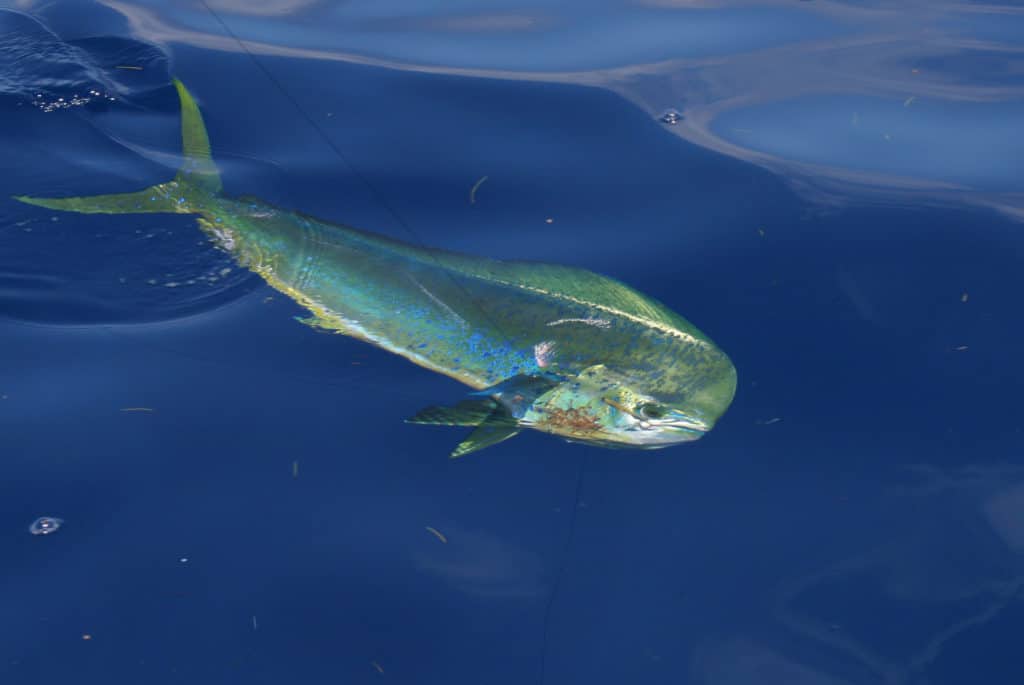
Once upon a time, South Florida’s dolphin season peaked in spring. Now summer spells prime time. Traditionally too, anglers trolled baits and lures along offshore weedlines. But Miami captain Abie Raymond has developed a novel, yet highly effective, way to target this popular species—kite fishing.
One Kite Two Baits
Raymond uses a single kite to deploy two skirted ballyhoo along weedlines and across weed patches. The lure-ballyhoo bait combos resemble flying fish — one of a dolphin’s favorite prey species — and they aggressively chase Raymond’s kite baits as he trolls south into the north-flowing Gulf Stream current.
“They raise right up on them. They greyhound after them a lot of times,” he says. The feather resembles a flying-fish wing, blowing out air and water. The back half of the ballyhoo and its shape mimic a flyer’s body.
In fact, one dolphin that Raymond cleaned after a recent trip, back at Bill Bird Marina in Miami Beach, had a flying fish in its stomach along with a filefish, a triggerfish and a baby blue runner.
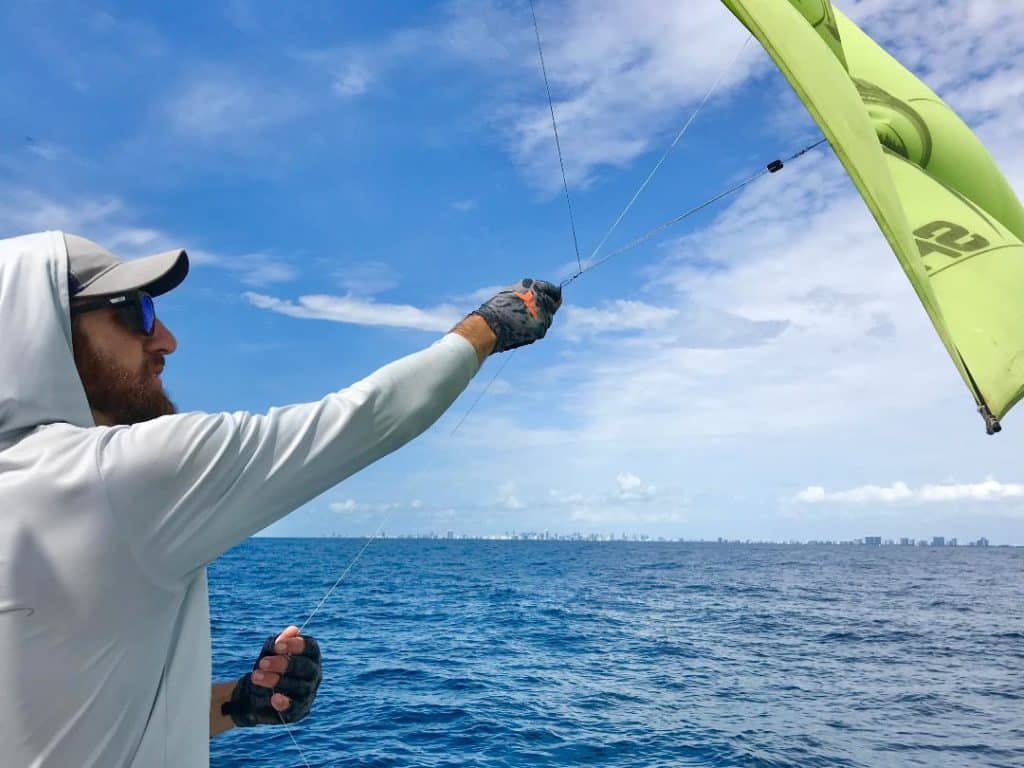
The fishing kite also helps Raymond hook more dolphin. “On a trolling rig, like an outrigger rig, you’ve got a little bit of drop-back, and then you’ve got to drop back the ballyhoo yourself to the fish,” he says. “With the kite, because that line’s going 100 feet in the air and back down, once they pop it out, they’ve got a drop-back already, so you can set it and forget it. They’ll still have enough drop-back to get hooked.”
Bait Prep
Raymond, whose Go Hard Fishing charter business offers offshore and inshore charters, as well as trips to Miami-Dade County’s freshwater canals for peacock bass, largemouth bass and clown knifefish, apprenticed at the knee of legendary Capt. Bouncer Smith, who retired a little over a year ago.
Smith taught Raymond to remain open to new techniques. That’s how he developed the mahi kite-fishing tactics.
Raymond “snakes up” a dead ballyhoo by wriggling it back and forth with his hands to break the entire spine, which gives the bait lifelike movement in the water. He also breaks the tail to prevent the bait from spinning, squeezes out any intestinal matter, and snaps the bill with an upward yank.
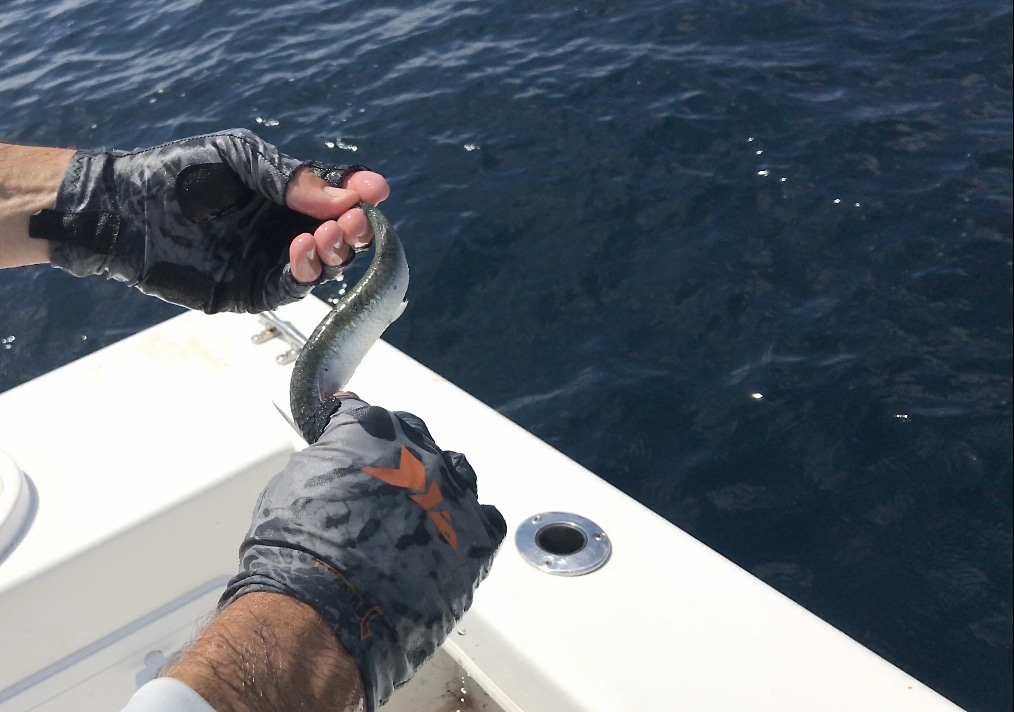
He inserts a 7/0 Mustad 3407 triple-strength J hook through both lips and through the front of the bait’s skull and slides a weighted skirt or feather—jet head, Billy Bait or sea witch—on top of the ballyhoo. He uses the lure more for weight than for the visual enhancement provided by their colorful Mylar skirts.
The weight helps keep the bait dangling down, Raymond explains. Without lead, the bait can sail upward on a breeze. “I use a 1-ounce Mini Turbo Slammer for the long kite bait, which is about 100 feet behind the boat,” he adds. “The short kite bait is 50 feet behind the boat, and I use a half-ounce feather because there’s not as much line going up into the sky.”
Placing the hook in the head instead of the belly, as in a trolling bait, makes the ballyhoo virtually weed-proof, especially positioned directly behind a skirt. That allows Raymond to spend much more time fishing.
“If you have to go through patchy grass, it doesn’t matter because your hook is out of the water,” he says. “We’ll drag the baits right over it, and that’s what makes it advantageous. Sometimes you’re not in an organized weedline, you’re in a scattered grass situation. You don’t have to worry about constantly picking grass off your baits. You just need to make sure that your baits are in the water.”
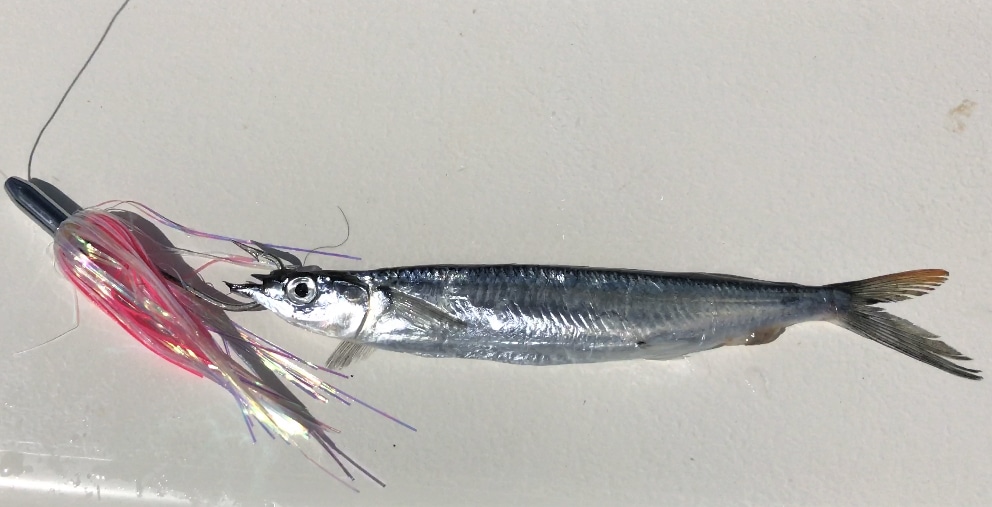
Light Flight
In recent years, the best dolphin bite has moved from May and June to July through September, with the peak of the dolphin activity in August. During summer’s dog days, when the wind can be light, keeping the boat moving at 7 knots helps keep the kite aloft.
“There’s always enough breeze,” he says. “We fly the kite on the clean side of the grass, which is almost always the east side in South Florida because of the easterly trade winds blowing against the weedline. But even if you get the baits over the seaweed, it’s fine, skip the ballyhoo like a flying fish.”
Rig the kite baits to 8 feet of 60- to 80-pound leader. Heavy monofilament prevents big dolphin or sailfish from fraying the line. Attach the leader with a Yucatan knot to doubled 20-pound braided mainline spooled on Penn 7500 Spinfisher reels with 7-foot Capt. Harry’s rods. The rigs not only catch dolphin and sailfish but also blackfin and skipjack tuna.
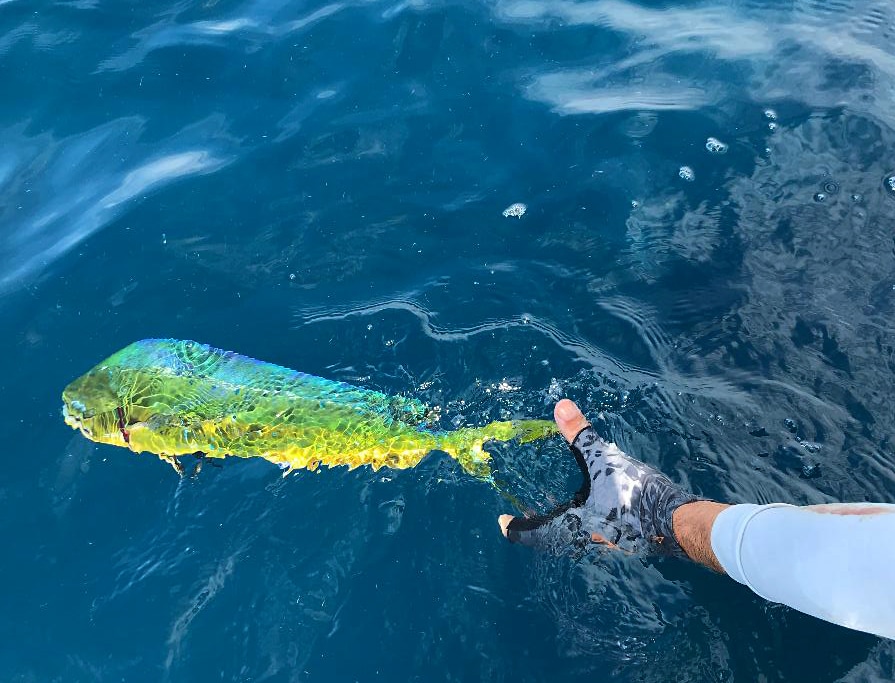
Live Chum
If a dolphin school appears after Raymond hooks a fish or two on the kite baits, he scoops a net full of minnow-sized pilchards from the livewell and tosses them into the water. The small baits immediately school up and stay close to the boat, which keeps the curious, hungry dolphins around.
“It fires them up and gives you more opportunities. You can keep them there,” Raymond says. “You’ve got fly-fishing opportunities, you’ve got jigging opportunities, plug-casting opportunities. And you don’t have to worry, ‘Oh, where’s my rod? Where’s my bait?’ while the dolphin are swimming by… the dolphin bust them all over the place for 10 minutes while you’re taking your time, rigging your rod, tying a new plug on, a jig, whatever you want.”
If he has bigger pilchards, Raymond pins them on 2/0 J hooks and casts them to the dolphin on 10-pound Ugly Stick spinning rods with 20-pound braid and 3500 Penn Slammer reels. The light outfits deliver a fun fight when hooked to 5- to 10-pound schoolie dolphin.
Read More: Tips and Tricks for Targeting Mahi
“The braid is so strong and so durable,” he says, “and those little reels now are so capable drag-wise, it eliminates the need for heavy tackle.”
Combined with Raymond’s kite fishing techniques, live chumming and proper tackle deliver an extremely effective method to catch dolphin this summer. Best of all, fishing head-hooked, skirted ballyhoo from a kite eliminates the need to repeatedly reel in baits to remove grass. You’ll just be removing dolphin.



